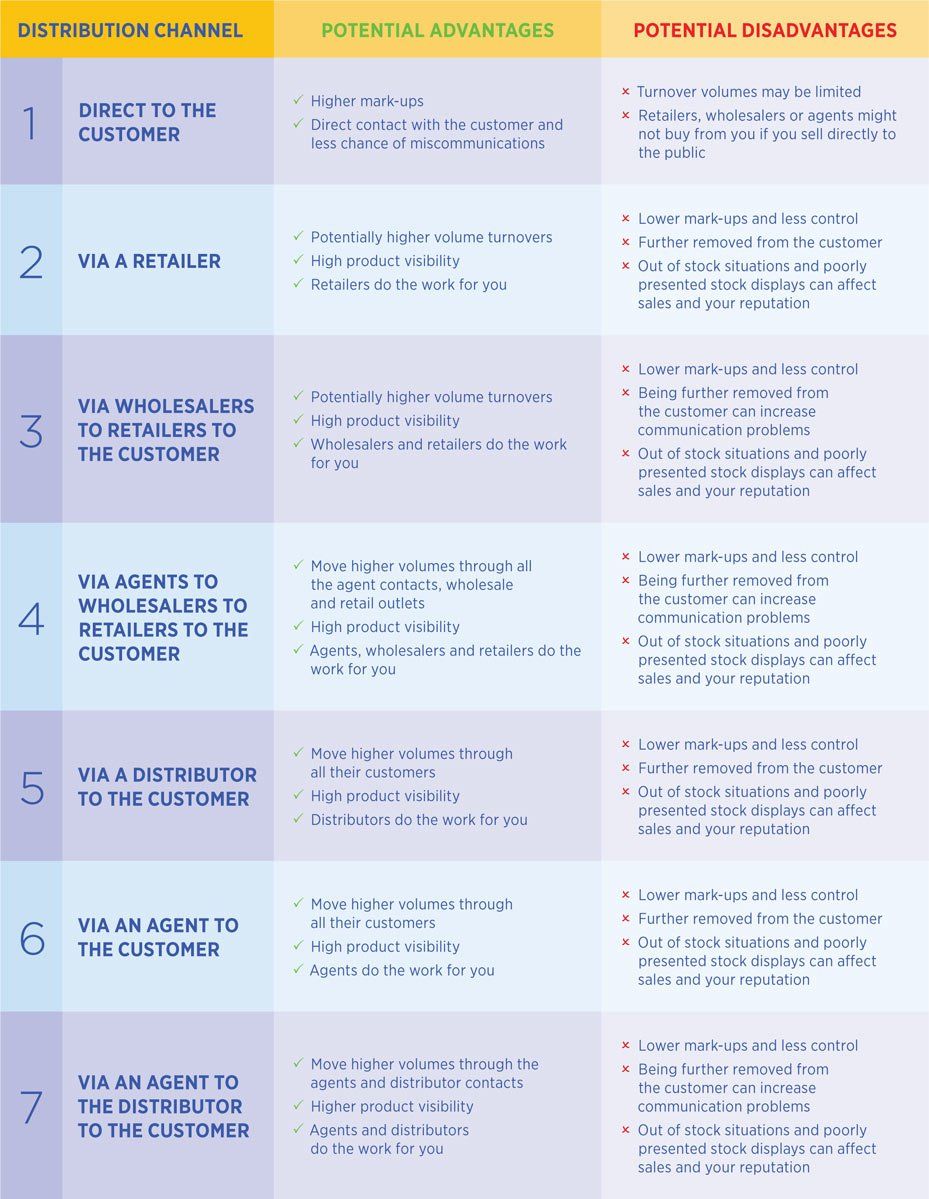MA56 7 P's Of Marketing
MARKETING
THE 7 P’s OF MARKETING: PLACE & PROMOTION
By Kenneth Fisher • July/August 2017 • Issue 56
Download PDF Version • 949 KB

Comprised of seven components namely, Product, Price, Place, Promotion, People, Process and Physical Evidence, The 7 P’s of marketing is a foundation concept in marketing used by businesses and marketers to help determine a product or brand’s offering.
In previous issues we covered the aspects of Product and Price and in this issue we take an in-depth look at the next two components, namely Place and Promotion.
PLACE
If you are in the retail trade, the location of your business will be of paramount importance to the success of your business. If, however, you are in manufacturing or work from home, location is less important, but proximity to your customers and distribution channel agents should be a consideration.
Choosing a suitable location
Ideal locations for establishing a retail shop will offer good visibility, high traffic flows, ample customer parking and should be easily accessible. Also consider the demographics of the area in relation to your target market as well as the number and proximity of competitors and the availability of competent staff. Before signing on the dotted line, weigh the affordability of the rent and amenities against your expected turnover.
Distribution channel options
Weigh the advantages and disadvantages of each distribution channel against your ultimate goal —whether your aim is to move volume, increase profitability or maintain contact with your customers.
Researching your competitors and consulting with knowledgeable people in the industry will enable you to identify the most effective, efficient and cost-beneficial option. This method is often used by companies that have a reasonable track record of applying variable pricing at different times of the year. They use their past experience to determine their pricing strategy for the year ahead.
Distribution Channel Strategy Options
While there are numerous distribution channel strategy options available, the most commonly used ones are discussed below.
- Comprehensive strategy: This strategy works best for mass market products/services, such as bread and milk, that require widespread distribution to all sectors of the market. In pursuing a comprehensive strategy, you will likely use all or most of the channels from retailers to wholesalers, agents, distributors and possibly even direct sales.
- Selective strategy: This strategy works well for products or services targeting selected segments of the market, such as specialised medicines only available through pharmacies and hospitals. A selective strategy typically employs only one or two distribution channels to achieve the best results.
- Exclusive strategy: This strategy is best suited to speciality goods purchased by specialised or exclusive clients at infrequent intervals. Products are distributed through appropriate exclusive channels; think Rolls Royce dealerships.
PROMOTION
The purpose of all promotion is to generate sales, inform clients, create brand/product awareness and to stimulate a desire for your product, but as a small business owner with a ‘small business budget’ it is important to properly research your promotional methods. Your promotional should incorporate some or all of the following methods:
Advertising
For instant, measurable results, consider small advertisements in the Yellow Pages, regular small advertisements in journals or trade magazines, or billboard advertising in locations frequented by your target market. Professionally printed business cards, flyers and handouts or brochures outlining your product details, branding delivery and sales representative vehicles, also work well. Alternatively consider discount coupons published in neighbourhood or national newspapers or on your website. Word-of-mouth advertising by satisfied customers is always a winner.
Public relations
Public relations techniques that could benefit small businesses include press releases, briefings, conferences, social events, and factory and office/branch tours. Distributing your annual report, circulating a monthly newsletter and sharing information online about your latest event, also works well to raise brand awareness. Community service initiatives like donations, sponsorships and assisting with community projects is a great public relations tool.
Sales promotions
There are almost unlimited occasions that can be used for sales promotions including, summer, winter, spring, autumn, end of season, Christmas or Easter sales. Alternative techniques include specific number of days sales, special discounts for limited periods, buy-one-get-one-free or bundle offers, and special coupon discount offers. Handing out promotional samples at supermarkets, schools and office parks is another great way to promote a product and raise awareness.
Direct marketing
Direct marketing techniques include website or online direct marketing; face-to-face or door-to-door selling; kiosk marketing in shopping centres, at exhibitions or conferences; and telephone, direct mail or catalogue marketing.
Personal selling
Staff should be properly incentivised to sell as much as possible. Ensure that everyone is well-trained and familiar with the selling cycle or process and, where necessary, enrol staff in an appropriate sales course like Simply Successful Selling.
Cost-effective strategies
Step one is to determine your promotional budget, then consult with others in your industry to determine which cost-effective strategies work best in your market and offer the highest sales returns.
Marketing budget items
When compiling a marketing budget for the year, be sure to include the following items, showing the monthly fluctuations:
- Income: Turnover, number of units sold, discounts offered.
- Variable costs:
(cost of sale/manufacturing) Opening stock, purchases, closing stock.
- Fixed costs:
(overhead expenses) Marketing staff salaries, printing, distribution costs, travelling expenses, promotional mix expenses, advertising, public relations, sales promotions, direct marketing, telephone, postage and packaging, rent, stationery, website, subscriptions, donations, and computer expenses.
- Gross profit: Net income (less cost of sales).
- Marketing budget ratios: Mark-up, gross profit and net profit percentages, breakeven turnover, breakeven number of units, maximum discount, total/real costs, and margin of safety.

Copyright © 2021 Digital Zoo Website Design Company
- All Rights Reserved
Disclaimer: SA Franchise Warehouse is not associated in any manner to any of the brands listed on this website apart from listing details of their respective franchise opportunities. We do not underwrite their viability as a business opportunity nor the quality of the service or products offered by their franchisees. Any complaints need to be directed to the franchisors directly.
